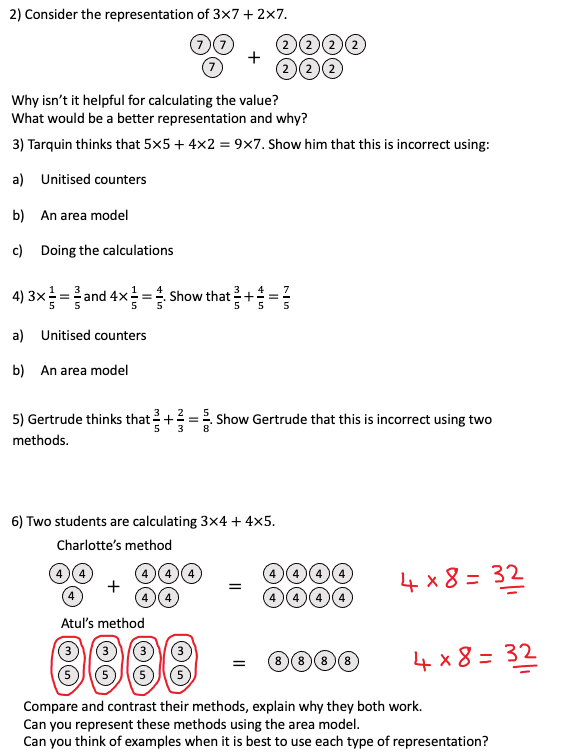Distributive Law - Area model and unit counters
- mrcowardmaths
- Feb 22, 2021
- 1 min read
This task is to help students make sense of the distributive law and how addition works; the collection of like objects. This is represented with both the area model and unit counters. This task also has links to adding fractions, highlighting why we need the same denominator, and links to algebra: collecting like terms and factorising.
The example sequence I would use would be initially representing a single multiplication, e.g. 3 x 11, using both representations. I believe it is then important to dicuss the relationship between 3x11 and 11x3, and whether this changes our representations. This could then continue to two multiplications being added. In my discussion with @mrshawthorne7 around this task, I realised that in the initial examples there should be a focus on the choice of counting unit. I think initially I would like to get them using the same counting unit for each multiplication so for 3×11+11×4 we would choose 11 as the counting unit. Now, this is not necessary, as shown in question 6, but without wanting to introduce too much and at once I think this discussion should be saved until after the task.
In the discussion it would be really nice to get pupils to think about the two methods in question 6 and when is each one appropriate or not appropriate. I would also discuss the problems with representing things like a x b + c x b with unit counters, and why the area model may be superior.





Comments